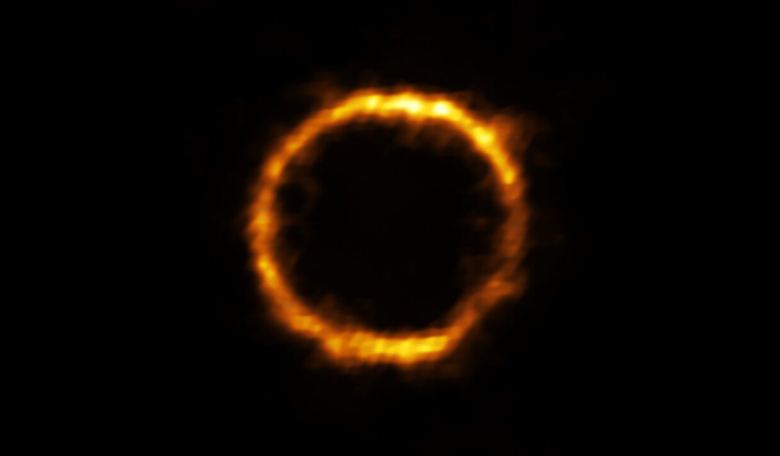The most distant Milky Way look-alike, seen when the Universe was only 1.4 billion years old, has been found by astronomers using the Atacama Large Millimeter/submillimeter Array (ALMA) and its features are so unusual for its tender age that it is challenging theories of how galaxies form.
After studying numerous galaxies throughout the Universe’s 13.8 billion-year-old history to understand how they evolve, current theories suggest that most galaxies like our Milky Way form gradually, reaching their large mass relatively late.
But with a couple of recent discoveries made using ALMA, that could be about to change.
Back in May, scientists discovered a massive rotating disk galaxy seen when the Universe was only ten percent of its current age. Found to be spinning at 272 kilometers (170 miles) per second, similar to our Milky Way, this galaxy defied current evolution assumptions, as scientists had thought that early, young galaxies grew from mergers between smaller, lower-mass galaxies.
Thrown together in often “violent’ collisions, it was believed the resulting ensemble of the young galaxies would be a big churned up mess with no discernible structure.
So, when a well-ordered, cold rotating disk known as the Wolfe Disk after the late astronomer Arthur M. Wolfe, was found so early in the Universe, this proved to be something of a conundrum.
Galaxy evolution is now being called into question again after the discovery of a similar breakthrough with an object called SPT0418-47.
Also found when the Universe was just 1.4 billion years old, SPT0418-47 was spotted by scientists using a method known as gravitational lensing.
Gravitational lens occur when a huge amount of matter, like a cluster of galaxies, creates a gravitational field that magnifies and distorts the light from distant galaxies that are behind it but in the same line of sight. It’s like looking through a giant magnifying glass and it allows researchers to study the details of early, faint galaxies too far away to be seen with current telescopes.
The light from SPT0418-47 has taken more than 12 billion years to reach us, and seen through a gravitational lens, it appears as a near-perfect ring of light around a nearby galaxy, thanks to their almost exact alignment.
By reconstructing the distant galaxy’s true shape and the motion of its gas, a team headed by Francesca Rizzo, PhD student from the Max Planck Institute for Astrophysics in Germany, found that SPT0418-4 is devoid of spiral arms, but more importantly, has a rotating disk and a bulge; two features typical of a more mature galaxy like our present-day Milky Way.
“When I first saw the reconstructed image of SPT0418-47 I could not believe it: a treasure chest was opening,” says Rizzo.
The reason being, this is the first time a bulge has been seen this early in the history of the Universe, making SPT0418-47 the most distant Milky Way look-alike.
On top of that it is also the most well-ordered galaxy disk ever observed in the early Universe, adds co-author Simona Vegetti, also from the Max Planck Institute for Astrophysics.
“The big surprise was to find that this galaxy is actually quite similar to nearby galaxies, contrary to all expectations from the models and previous, less detailed, observations,” says co-author Filippo Fraternali, from the Kapteyn Astronomical Institute, University of Groningen in the Netherlands.
With a picture-perfect structure belying such a young age, what will eventually happen to SPT0418-47 - has it stopped evolving? Unlikely say the team. Even though SPT0418-47 has a disc and other features similar to those of spiral galaxies we see today, they expect it to evolve into a galaxy very different from the Milky Way.
SPT0418-47 is predicted to join the class of elliptical galaxies, a type of galaxy with an approximately ellipsoidal shape and a smooth, nearly featureless image. Stars found inside of elliptical galaxies are on average much older than stars found in spiral galaxies like our Milky Way.
Despite what might appear as a now slow death to a bland, unimpressive finale, right now SPT0418-4 is something of an enigma that could give new insights into the past processes of our Universe.
“This result represents a breakthrough in the field of galaxy formation, showing that the structures that we observe in nearby spiral galaxies and in our Milky Way were already in place 12 billion years ago,” concludes Rizzo, whose research has been published today in Nature.











